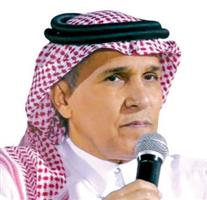Benfica’s defense tries to repeat success against Liverpool

eshrag News:
Rumors of the possibility of an Asian Super League continue to ripple through football circles across the continent, although any suggestion of concrete developments is premature at this stage.
Some reports have suggested that a proposed version of such an elite competition could get off the ground in time for the 2024-25 season but this might be overly optimistic given the controversial nature of any change.
The idea has proven to be divisive but, according to sources at the Asian Football Confederation, there is at least agreement that it should be studied as its never has been before.
There has been talk in Asian football about a super league — although that is a label the AFC is keen to avoid at this stage — for many years. It came to nothing but this time could be different. After a meeting of the confederation’s executive committee in Qatar last week its president, Sheikh Salman bin Ebrahim Al-Khalifa, announced that members had agreed to look at ways in which club competition in Asia could be improved.
“I am pleased to announce that we will set up the Elite Club Competition Task Force, which will be responsible for establishing the ways in which we can transform our elite club football into a more attractive stage to improve technical performance, drive commercial value and excite investors to elevate our club competitions to the next level,” he said.
Currently, there are two major regional competitions for clubs in Asia: The AFC Champions League, which is the flagship tournament and open to leading member associations, and the AFC Cup, which is reserved for developing nations.
“The AFC’s commitment to raising the standards of the Asian game … to usher new heights of success, to build a better and brighter future, is stronger than ever and it is a future that holds great promise for the AFC and its members,” said Sheikh Salman.
The task force will include representatives from the eastern zone, including Football Australia, the Chinese Football Association, the Japan Football Association and the Korea Football Association. Representatives from Southwest Asia include the Saudi Arabian Football Federation, the Qatar Football Association, the UAE Football Association and the Uzbekistan Football Association.
In addition to the establishment of the task force, there was agreement that officials from the member countries would study the feasibility of introducing a new, elite club competition. There is some debate within the AFC and among its member associations about whether this is something that club football in Asia needs but there seems at least to be general agreement that it is better to discuss the issue after it has been properly investigated and there is something specific to consider and debate.
Supporters of the idea point to the necessity of improving standards at the top end of the continental game. This argument suggests that similar to the way that UEFA introduced the Conference League as a third-tier European club competition, Asia could develop a new elite league for its biggest and best clubs.
A tighter and leaner top-level competition would, the theory goes, be more attractive to broadcasters, sponsors, the media and fans and, crucially, provide added revenue to clubs in the form of participation fees as well as prize money.
There are concerns among some that the current AFC Champions League, which was expanded from 32 to 40 teams last year, has failed to capture the imagination of fans in the biggest football markets. In addition there have been complaints that the prize money is insufficient, which recently prompted Chinese club Changchun Yatai to withdraw from the competition because they were struggling to afford to participate in the play-offs and group stages.
With details of what an elite club competition might look like still sketchy and, at the very least, more than two years away, it remains to be seen what it might mean for the Saudi clubs that already have a good relationship with the existing AFC Champions League. Al-Hilal have won two of the past three competitions, and all five groups in the western half of the 2022 competition will be hosted in Saudi Arabia, in the cities of Riyadh, Jeddah and Dammam.
One of the biggest questions about a new competition would be how many teams would be included; there has been talk of 20 or 24 at most. The bigger footballing nations have four teams in the Champions League and there would be a reluctance among them to see top-tier allocations shrink. Another major stumbling block is how any new elite tournament would connect to other continental and domestic competitions.
There has long been criticism that the AFC Champions League is exclusionary. The 2022 competition features teams from only 21 member associations, fewer than half of the AFC’s 47 members.
Any development that proposes making the top tier of Asian club football the preserve of an even smaller number of countries is likely to meet significant opposition — but perhaps it will at least motivate the footballing powers on the continent to enter into their first real debate about the pros and cons of some kind of “super league.”
Noting that the news was copied from another site and all rights reserved to the original source.
xnxx,
xvideos,
porn,
porn,
xnxx,
Phim sex,
mp3 download,
sex 4K,
Straka Pga,
gay teen porn,
Hentai haven,
free Hentai,
xnxx,
xvideos,
porn,
porn,
xnxx,
Phim sex,
mp3 download,
sex 4K,
Straka Pga,
gay teen porn,
Hentai haven,
free Hentai,




